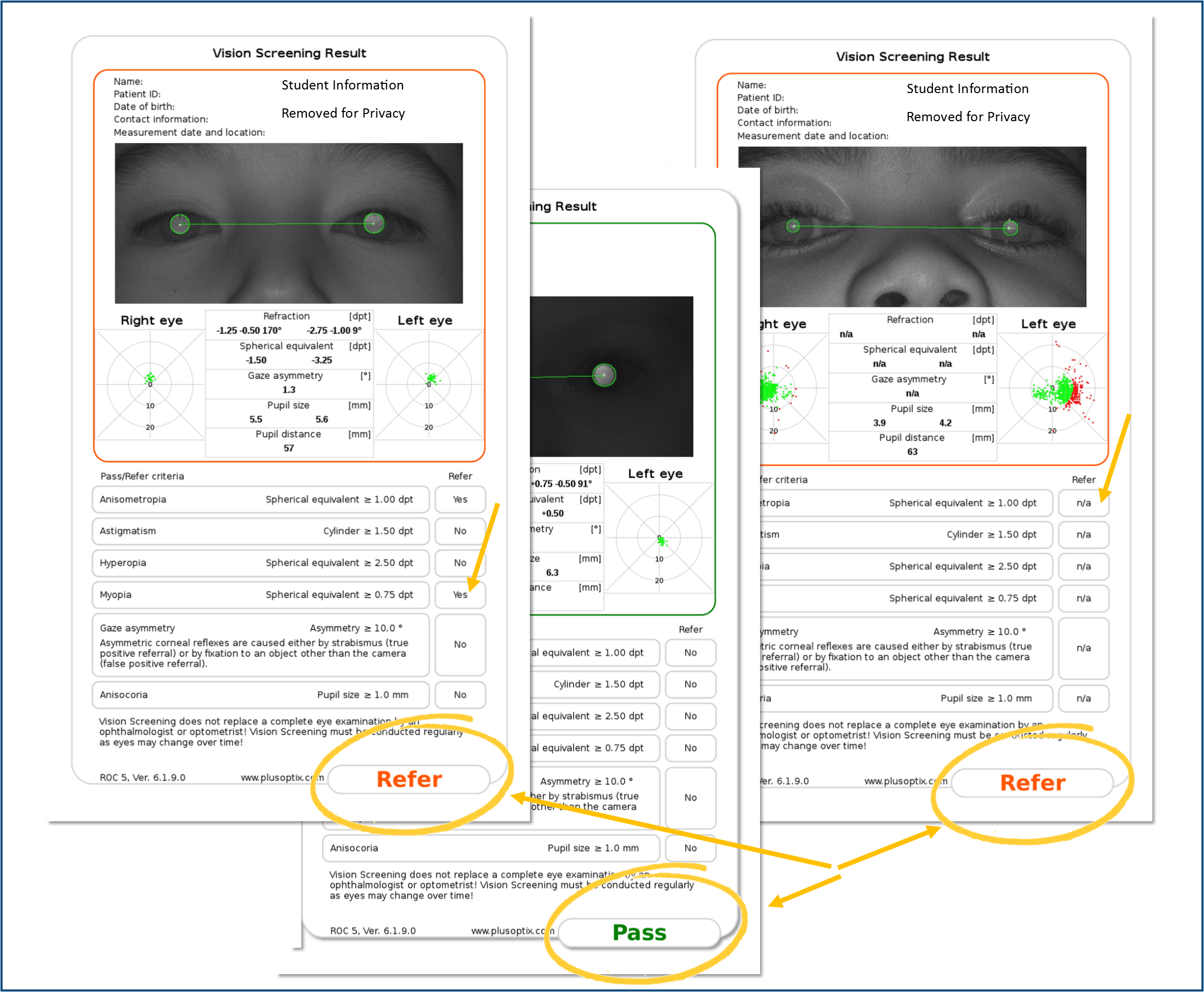
Understanding Your Results
This information is intended to provide a basic understanding of the vision screening certificate. The numbers are included to provide information (like the reason for the referral) to the eye doctor providing the eye exam. This is a screening only and is not intended to provide a diagnosis; only a doctor can diagnose a vision problem and prescribe treatment.







**While no screening can test for the entire spectrum of possible vision problems, the screening device used in your child’s screening tests for the most common and broadest possible scope of vision problems. As with any screening, it is possible to have a vision problem that is not detected through the screening process. Even if your child received a “PASS” result, please take them to an eye care provider if they are displaying any signs of a vision problem (see the front of your certificate).
Conexus recommends regular vision care as part of a continuum of health care.
Definitions
Refractive error occurs if the eye cannot focus light properly on the retina. It usually causes blurry vision and in most cases can be corrected with eyeglasses (Astigmatism, Hyperopia, Myopia – see below). Some refractive errors, if not corrected early enough, can lead to permanent vision loss in the affected eye (see Anisometropia below). This is known as amblyopia, or “lazy eye”. Amblyopia can result from any condition causing one eye to be significantly stronger than the other; this may include anisometropia, strabismus (see corneal reflex below), opacities, ptosis (drooping eyelids), or other conditions. Early treatment is the key to preventing vision loss from amblyopia.
Anisometropia is a significant difference in the power of the eyes. The screener uses the spherical equivalent measurement to calculate whether one eye is significantly stronger than the other. If the difference in the two spherical equivalent measurements is 1.00 D or greater, regardless of age, a referral is generated. A significant difference may indicate the potential for amblyopia, or “lazy eye”.
Astigmatism results in blurry vision because the eyes are not able to sharply focus light. Young children have some degree of astigmatism, measured as “cylinder”, so a referral will not be generated unless this number is equal to or above the number given in the heading. This number changes with age, as the degree of astigmatism that is normal decreases as a child matures.
Hyperopia is better known as farsightedness; Myopia is better known as nearsightedness. In these refractive errors, the eye is not shaped/sized to properly compliment its focusing power (light doesn’t focus directly on the back of the eye as it should), resulting in blurry vision up close (hyperopia) or at a distance (myopia). Young children typically have some degree of refractive error (more commonly hyperopia), so these numbers change as the child’s age increases and the acuity a child their age would be expected to have improves. The higher the number, the more significant the deficiency. (+) numbers indicate hyperopia; (-), myopia.
Gaze asymmetry measurements screen for potential muscle imbalance or misalignment of the eyes (strabismus). Corneal reflexes are recorded on the “targets” shown below the picture of your child’s eyes, as well as in the list of criteria. The screener detects whether the eyes are moving together properly. Cases where the eyes are not aligned properly can result in difficulty with 3-dimensional vision, tracking while reading, blurriness or discomfort, and/or permanent loss of vision in the affected eye (amblyopia or “lazy eye”).
Anisocoria simply means unequal pupil size. This can, in some cases, indicate a mass in the eye or a structural or neurological disorder. If there is more than 1mm difference in the sizes of the right and left pupils, a referral will be generated.
If you have additional questions about our technology-based screenings, please contact us by email or call (804) 423-2020 ext. 7.
